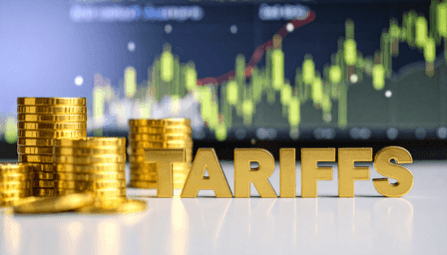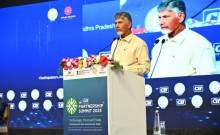
In the intricate choreography of global markets, India stands poised at a pivotal moment, navigating a storm unleashed by Washington's trade policies. The United States, once a cornerstone of India's export success, has turned adversary with a sweeping 50 percent tariff hike on Indian goods, effective August 27, 2025, citing India's imports of discounted Russian oil as "funding aggression."
This isn't mere policy; it's a seismic jolt threatening $36 billion to $48 billion in exports, from Surat's diamond workshops to Tiruppur's textile looms. Yet, India's economy, projected to grow at 6.8 percent in FY26, shines as a beacon of resilience. This is not a story of survival but a bold leap toward self-reliance, fueled by domestic vigor, strategic diplomacy, and an unyielding spirit.
"India's growth isn't chained to America's caprice. Our domestic engine of consumption and reform powers us forward."
A Trade Shock with Human Faces
The data tells a sobering tale. India's $86.5 billion in exports to the US, comprising 18 percent of total merchandise trade and 2.2 percent of GDP, faces a severe blow. Textiles, accounting for 12 percent of exports, could see orders drop by up to 70 percent, imperiling one million jobs in labor-intensive hubs. Gems and jewelry, a $10 billion trade, brace for a 40 percent decline, while marine products like shrimp face a 58 percent effective levy. Small businesses, employing 110 million, risk closures, with government estimates projecting a 0.3 percent GDP reduction in FY26, potentially rising to 0.5 percent if trade rerouting falters.
India's narrative, however, transcends these setbacks. Domestic consumption, driving 60 percent of GDP, powered a 7.8 percent growth surge in Q1 FY26, outpacing the Reserve Bank of India's 6.5 percent forecast. Services grew 9.3 percent, lifted by digital adoption, while public capital expenditure rose 7.6 percent. A weakening rupee, at 88.80 per USD in late September, bolsters exporters by enhancing competitiveness, offsetting 20 to 30 percent of tariff costs. As a Mumbai trader remarked, "The US pays for its tariffs with higher prices. We'll pivot."
Fed's Pivot: A Glimmer of Opportunity
Across the Atlantic, the Federal Reserve's September 18 rate cut to 4 to 4.25 percent, with 50 more basis points expected by year-end, offers India a lifeline. US labor market softness, with August payrolls adding just 22,000 against 150,000 expected, has dampened demand, but lower yields are reversing $15 billion in foreign investor outflows since July. Indian markets, with Sensex and Nifty up 0.5 percent post-cut, stand to gain $8 billion to $10 billion in debt and equity inflows. IT giants like Infosys, reliant on the US for 60 percent of India's $205 billion services exports, saw 2 percent stock gains, signaling renewed American investment.
"Fed cuts ignite a spark for India's markets, channeling billions back to our shores."
Remittances, a $100 billion lifeline with 25 percent from the US, could rise 2 to 5 percent if US jobs stabilize, strengthening households in Kerala and Tamil Nadu. The RBI, maintaining a 5.5 percent repo rate, has room for a 50-basis-point cut if inflation allows, potentially saving ₹3,000 on a ₹50 lakh home loan and spurring rural consumption.
Inflation's Challenge and Domestic Strength
Inflation, at a six-year low of 2.07 percent in August due to a 10.98 percent drop in vegetable prices, offers breathing space. Yet, tariffs threaten to import trouble, with oil prices up 5 percent on supply fears, potentially pushing CPI to 3.3 to 4.1 percent by mid-2026. The rupee's weakness widens the current account deficit to $85 billion, but the RBI's $650 billion forex reserves provide a robust shield. Recent GST cuts on over 100 essentials, boosting GDP by 0.7 percent through household spending, counter cost pressures. As an analyst noted, "India's inflation firewall is its diversity. Rural demand and reforms absorb shocks."
Global Headwinds, Local Resilience
Globally, the IMF's 3.0 percent growth forecast for 2025 pales against India's 6.8 percent, outshining China's 4.0 percent property-driven slowdown. But risks persist: a US government shutdown, effective midnight October 1, could delay critical jobs and inflation data, denting sentiment and shaving 0.1 percent off India's growth through export uncertainty. US unemployment at 4.3 percent, with 1.2 million jobs revised away, threatens $10 billion to $15 billion in IT contracts, though AI upskilling mitigates losses.
"Tariffs test us, but India's playbook of diplomacy and diversification turns adversity into opportunity."
India's response is a masterclass in agility. Prime Minister Modi's diplomatic efforts, including talks with US counterparts, seek tariff relief within a 20-day window. Free trade agreements with the UK, EU, and ASEAN aim to redirect 20 to 30 percent of US-bound exports. Trade with Russia, up $15 billion, and Production-Linked Incentive schemes, with $10 billion disbursed, bolster local manufacturing in EVs and renewables.
Social media captures the mood: "Resilient India weathers storm," one user declared, reflecting a nation undaunted.
A Path Forward Amid Uncertainty
India's FY26 outlook remains robust despite challenges. GDP growth is projected at 6.8 percent without major tariff escalation, but could fall to 6.3 to 6.5 percent under a tariff-impacted scenario, driven by a 42 to 55 percent contraction in US-bound goods. Inflation, forecasted at 3.1 percent, may rise to 3.3 to 4.1 percent due to commodity pass-through. US exports, valued at $86.5 billion, could drop to $38 billion to $50 billion. Foreign institutional inflows, expected at $8 billion to $10 billion with Fed cuts, risk a $2 billion to $5 billion outflow if shutdown uncertainty persists. Remittances, at $100 billion, may dip to $95 billion to $98 billion due to US labor market softening.
India has faced protectionist headwinds before, from 2018 steel tariffs to 2020 border tensions, each met with strategic pivots. Today, the roadmap is clear: accelerate non-dollar trade through rupee-ruble swaps, invest $20 billion more in PLI for tech and green sectors, and court new markets in Latin America and the Middle East. Investors should favor defensives like FMCG and pharma, while households channel remittances into education and skills.
India stands not as a victim but as a vanguard. The US tariffs bruise, but a nation clocking 7.8 percent quarterly growth amid a 2.3 percent global slowdown bends without breaking. As RBI Governor Sanjay Malhotra affirmed, "Our buffers are solid; the path ahead, promising."
Let the negotiations unfold. India's economic story is one of fortitude, ready to shine through the tempest.
[Major General Dr Dilawar Singh is an Indian Army veteran who has led the Indian Army's Financial Management, training and research divisions introducing numerous initiatives therein. He is the Senior Vice President of the Global Economist Forum AO ECOSOC, United Nations and The Co President of the Global Development Bank.]

















